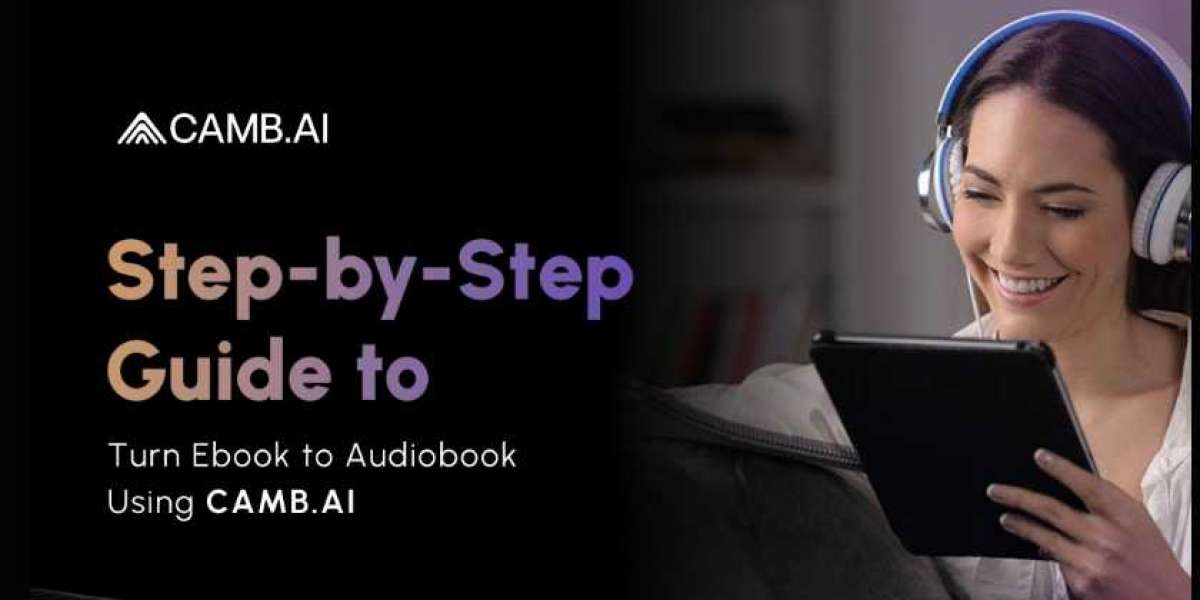Audiobooks are booming in popularity, with millions turning to audio for entertainment, learning, and inspiration. In 2025, authors and publishers have more options than ever to convert printed or eBooks into engaging audiobooks. Whether you're an author, educator, or entrepreneur wanting to reach broader audiences, turning your written content into a professional audiobook unlocks new opportunities for visibility and revenue.
However, creating an audiobook involves more than simply reading aloud. It is a careful blend of narration, recording, editing, and mastering to produce a seamless and enjoyable listening experience. New technologies, particularly AI-powered voice synthesis like that offered by Camb, have significantly lowered barriers — no longer do you need expensive studios or professional actors to get started.
This guide walks you through all essential steps to convert your book to an audiobook in 2025, explains your options, and provides pro tips to ensure the best results.
Step 1: Evaluate Your Book for Audiobook Suitability
Not all books convert equally well to audio format. Consider:
- Content Type: Novels, memoirs, and narrative nonfiction translate naturally. Highly visual books with charts or complex layouts may require adaptation.
- Structure: Dividing your manuscript into manageable chapters or sections helps both narration and production.
- Tone Style: Auditory storytelling relies heavily on pacing, inflection, and character voices.
Review your manuscript to identify tricky pronunciations or dialogue-heavy passages that might need special attention during narration.
Step 2: Choose Your Narration Approach
Narrate Yourself
Pros: You know your work’s nuance best, providing authentic connection, especially for memoirs, nonfiction, and self-help.
Cons: Requires training, practice, and home studio setup. Recording sessions can be time-intensive.
Hire a Professional Narrator
Pros: Experienced voice actors bring skill, consistency, and emotional depth, suitable for fiction and complex narratives.
Cons: Higher costs and scheduling logistics.
Use AI Narration
Pros: Rapid turnaround, cost-effective, and continuously improving in naturalness. Camb AI for example, offers emotional voice modulation and cloning to retain brand personality.
Cons: AI voices may lack subtle human nuances required for literary fiction or poetry.
Selecting the right path depends on your budget, timeline, and genre.
Step 3: Set Up Your Recording Environment
Equipment Essentials
- Microphone: Invest in a good USB or XLR microphone (e.g., Audio-Technica AT2020, Blue Yeti).
- Headphones: Closed-back headphones help monitor audio quality.
- Quiet Space: Soundproof or low-echo rooms with minimal background noise.
Software Tools
- Audacity (free), Adobe Audition, or professional DAWs for recording and editing.
- AI narration platforms that generate audio directly from text input.
Step 4: Master Narration Techniques
Successful audiobook narration depends on:
- Pacing: Moderate speed allows listeners to absorb content without boredom.
- Tone Emotion: Convey mood suited to genre; drama needs intensity, nonfiction demands clarity.
- Character Voices: Differentiate characters with distinct voices or accents.
- Pronunciation: Ensure accuracy to avoid jarring listener experiences.
Narrators often pre-read chapters to internalize content before recording to maintain consistent tone and energy.
Step 5: Record and Edit the Audiobook
- Record in manageable segments, allowing breaks to maintain vocal stamina.
- Use ‘punch and roll’ recording to fix mistakes without restarting entire sections.
- Edit carefully to remove clicks, breaths, and background noise.
- Maintain natural breaths and pauses; over-editing can create an unnatural effect.
AI tools expedite editing, but human oversight critical for quality.
Step 6: Format and Publish Your Audiobook
- Export to industry-standard formats (MP3, AAC).
- Add chapter metadata, cover art, and descriptions.
- Publish on platforms like Audible, iTunes, Google Play, or distribute independently.
Enhanced AI services can assist with multi-language versions and promotional snippets.
Benefits of Using AI in Audiobook Creation
- Low costs and reduced production time accelerate market entry.
- Voice cloning and emotional AI ensure consistent yet dynamic narration.
- Supports creators lacking access to professional studios.
- AI technology enables scalable audiobook production for extensive catalogs.
Explore Camb AI-powered narration tools to harness these benefits.
SEO Strategy for Ranking “How to Convert a Book to an Audiobook”
- Incorporate keywords such as convert book to audiobook, audiobook narration techniques, and AI audiobook creation naturally, maintaining ~2.5-3% keyword density.
- Use related terms like narration tips, audiobook production tools, and voice cloning for audiobooks.
- Optimize headings, meta tags, image alt texts, and URLs.
- Link to authoritative resources, including Camb’s guide: how to convert book to audiobook.
Frequently Asked Questions
- How much time does it take to narrate a book?
Typically, narrating a book takes 2-3 times the length of the finished audiobook, accounting for retakes and breaks. - Can I use AI for fiction audiobooks?
AI excels in nonfiction and simple narratives; however, fiction with complex characters often benefits from human narration. - What equipment do I need at home to record?
A good microphone, quiet space, quality headphones, and recording software suffice for professional results. - How do I publish my audiobook?
Platforms like Audible’s ACX, Apple Books, and Google Play streamline publishing, ensuring wide distribution. - Is voice modulation important in narration?
Absolutely! Adjusting intonation, pace, and emotion keeps listeners engaged and enhances storytelling. - Are AI voices copyright safe?
Most AI platforms ensure generated voices are unique or licensed, but always verify terms before commercial use.
Conclusion
Learning how to convert book to audiobook in 2025 is more accessible and exciting than ever before. Whether you choose the human touch of a professional narrator or leverage sophisticated AI voices from Camb, the key is preparation, passion, and polishing your production. For detailed, step-by-step guidance and cutting-edge tools, visit Camb’s comprehensive guide here, and start transforming your written words into captivating audio experiences that resonate worldwide.







